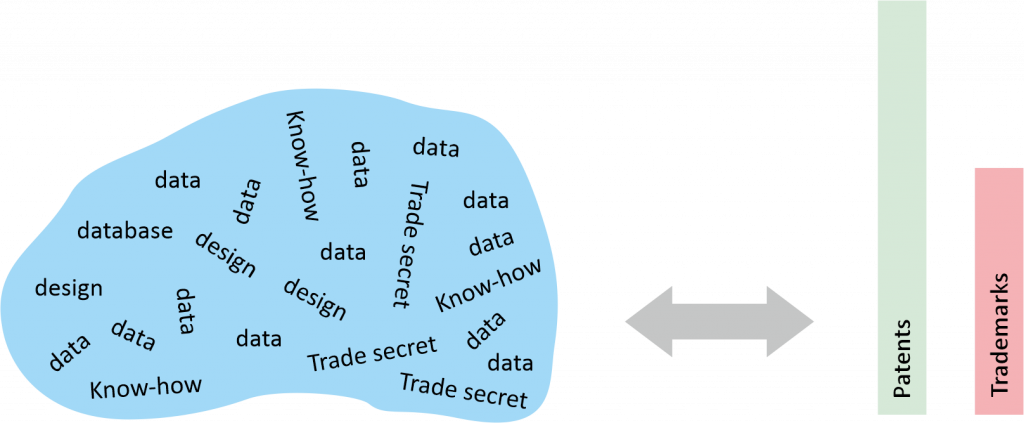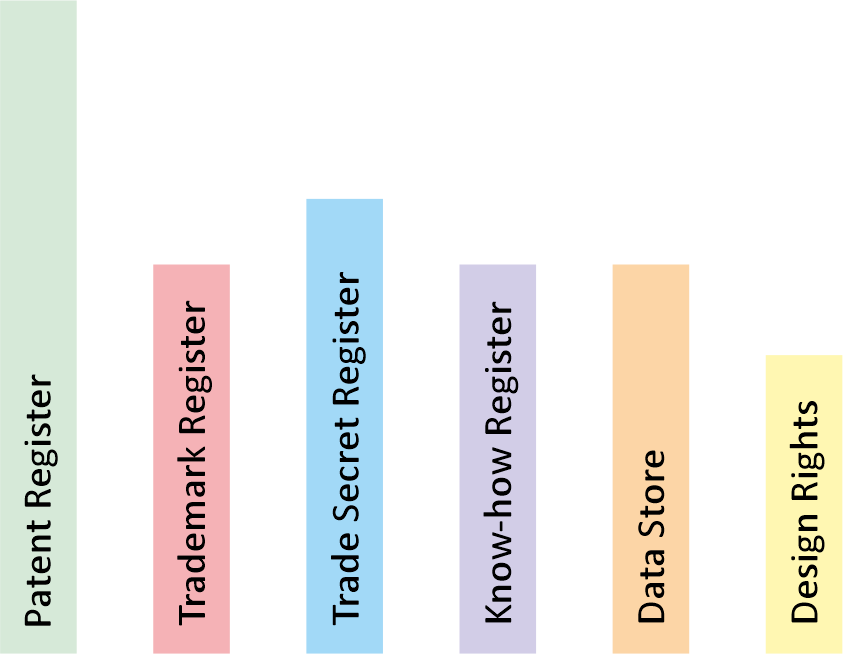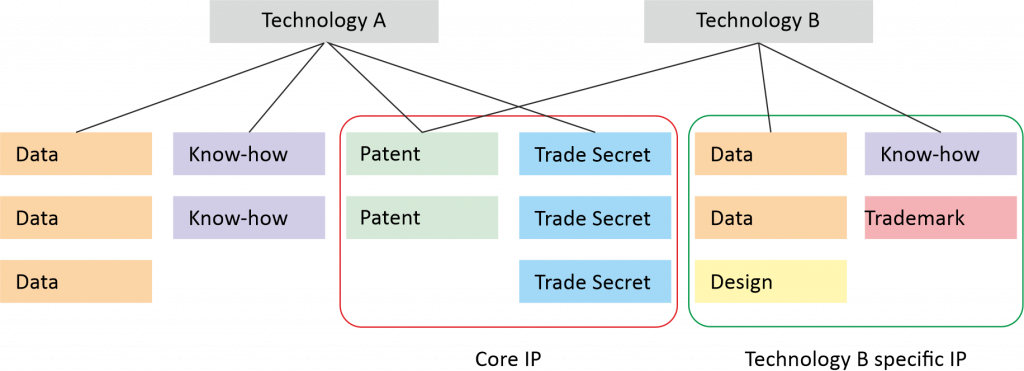
Cubicibuc believes that for organisations to maximise the value of their intellectual property, a holistic IP strategy must be developed that aligns with the overall goals of the business.
We identify four tools for IP management that are commonly deployed in organisations looking to pro-actively manage, extend or exploit their IP as part of a holistic IP strategy:
- IP Audit
- IP Health-check
- IP Articulation
- IP Assurance
We discuss the differences between each tool in the sections below. Each has its place, and when used correctly supports the development and maintenance of the organisations IP strategy.
IP Audit
Like other forms of audits, an IP Audit seeks to identify what IP assets you have. IP Audits should be performed regularly, and kept ‘live’.

The results from an IP Audit are typically lists or registers of assets. It is common that certain formally registered assets such as patents and trademarks will be managed separately by external firms, such as patent attorneys. This creates an additional potential problem as these lists are remote from the organisation.

To be useful, and add value to the business IP asset registers (patent register or trade secret register etc) should not be left as passive lists. Assets must be categorised to provide further insight, such as identifying core, non-core, not-used. If done well an IP Audit can support decision making processes at the operational level, and form a fundamental dataset to support any strategic management of the IP as part of an overall strategy.
The results of an IP audit must be used for something, whether that’s identifying gaps in existing portfolios or risks from competitors, or establishing a monetisation programme to sell unused / non-core assets.
However, an IP audit in itself is unlikely to provide strategic business benefits, unless further analysis is performed. Unless you’ve also created a monetisation strategy (e.g. identified non-core sale targets, allowed some to lapse, licensed or sold others), then it’s a passive list.
IP Health-check
IP Health-checks are often performed alongside IP Audits, and focus on the processes and policies that support the organisations IP.
The purpose of the IP Health-check is to ensure these processes and policies are providing value to the business and are fit-for-purpsoe.
Typical IP processes and policies include:
- Invention disclosure forms / invention capture processes
- Patent review board processes
- Employee incentivisation schemes
- Competitor landscape / competitor monitoring
- Trade mark monitoring
- etc …
Again the IP health-check itself is unlikely to provide strategic business benefits, but ensures that “the basics” are in good working order. In order to support decision making at a strategic level the organisation must answer why it is doing these things – what is the point, and how does the IP support the business strategy / P&L.
IP Articulation
Building on the basic IP Audit function, IP Articulation seeks to structure the various lists and registers into a form that aligns to the products, services and technologies of the business to allow better analysis and decision making.
It is not uncommon for businesses to maintain separate, siloed lists for different IP assets.

This creates challenges when a business seeks to utilise the IP for reasons such as licensing or sale of individual products, services or technologies. Without a clear understand of the linkages between the IP and the dependences / inter-dependences organisations risk losing value when such events occur.

Such a structured approach enables:
- Approaches to ValuationDisassembly of IP along product or service lines that allows associations to be viewed and hence informed decisions to be made
- The identification of relevant background-IP prior to negotiations
- A clear definition and articulation of the related soft-IP – which if left in traditional siloed registers (e.g. separate patent register and trade secret register) risks leaking valuable IP owned by the business to collaboration partners
- Identification of the gaps in the IP portfolio enabling the identification and justification of collaborative partners that can complement / fill those gaps
- Presents a clear view of the IP for investment / valorisation purposes.
IP Assurance
IP Assurance is an overarching strategic management process that ensures the IP aligns with the business objectives allowing IP to be presented in the necessary form for the intended purpose, e.g. licensing or sale.
IP Assurance is an on-going process, that is embedded within the organisation and allows for immediate insight to be derived from the widest portfolio of IP assets within the business.

Cubicibuc provides pragmatic support
We believe good IP management allows business to protect its competitive advantage; to generate returns on R&D investment and to secure investment and finance. Modern businesses neglect their IP assets at their risk as poor IP management gives away value and reduces barriers to entry for competitors compromising the organisation’s capabilities.
To manage IP well business must adopt a combination of commercial, legal and technical expertise – but always with a pragmatic focus to actively manage and exploit the IP.
Cubicibuc supports its clients by:
- providing confidential and independent technical services to evaluate IP assets
- performing IP audits, patent mining and landscaping exercises
- developing IP strategies to support commercial negotiation, licensing and litigations
- providing independent technical expert reports
We work with businesses ranging from smaller start-ups to mature multinationals; from early stage invention capture through to exploitation and monetisation of IP assets.
To discuss how Cubicibuc’s expertise can help your organisation manage and exploit IP, please contact us at info@cubicibuc.com
